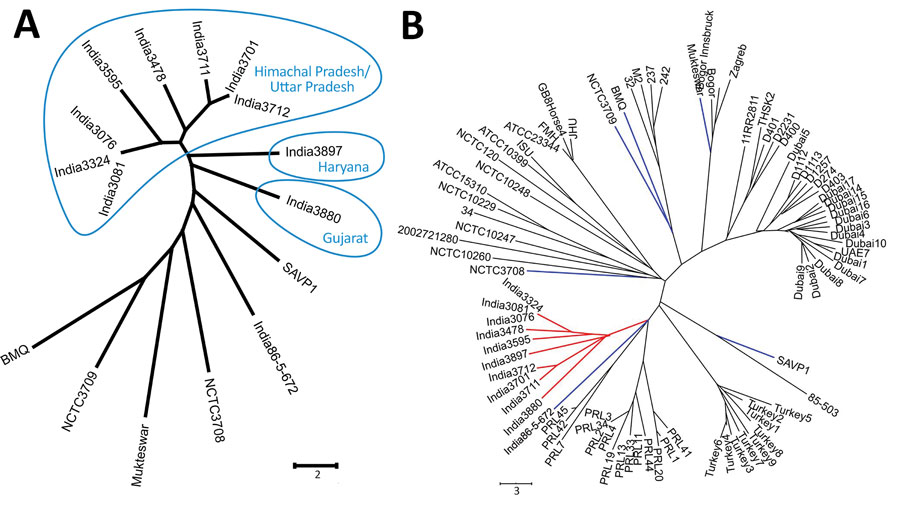Volume 27, Number 6—June 2021
Research Letter
Molecular Typing of Burkholderia mallei Isolates from Equids with Glanders, India
Figure

Figure. Minimum evolution trees based on 23 VNTR loci of 10 Burkholderia mallei isolates from Himachal Pradesh, Uttar Pradesh, Gujarat, and Haryana states, India, compared with reference sequences. A) Comparison of Himachal Pradesh–Uttar Pradesh cluster isolates (blue circles) with 6 older B. mallei isolates from India. B) Comparison of Himachal Pradesh–Uttar Pradesh cluster isolates (red branches) with 77 previously published B. mallei isolates, including the 6 others from India (blue branches). Scale bars indicate allelic differences.
1These first authors contributed equally to this work.
Page created: April 21, 2021
Page updated: May 18, 2021
Page reviewed: May 18, 2021
The conclusions, findings, and opinions expressed by authors contributing to this journal do not necessarily reflect the official position of the U.S. Department of Health and Human Services, the Public Health Service, the Centers for Disease Control and Prevention, or the authors' affiliated institutions. Use of trade names is for identification only and does not imply endorsement by any of the groups named above.